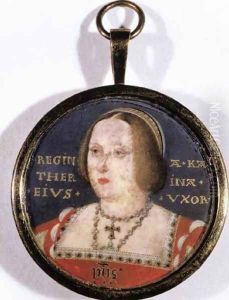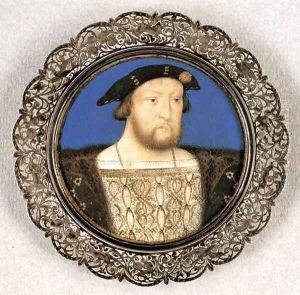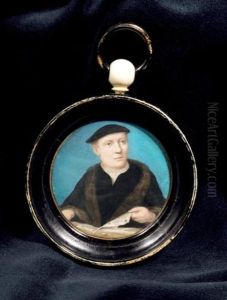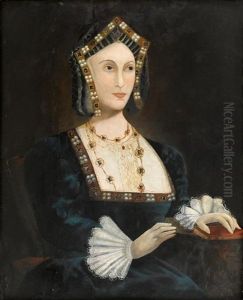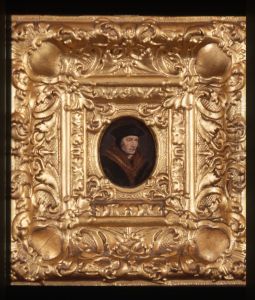Lucas Horenbout Paintings
Lucas Horenbout, also known as Lucas Hornebolte, was a Flemish artist who is recognized as one of the earliest pioneers of miniature portrait painting in England. Born in Ghent, modern-day Belgium, around 1490 to 1495, Lucas came from a family deeply entrenched in the arts. His father, Gerard Horenbout, was a well-respected illuminator and manuscript painter, who played a significant role in Lucas's early training and development as an artist. The exact date of Lucas's birth remains uncertain, but his artistic legacy is well documented.
Lucas Horenbout's move to England in the 1520s marked a significant phase in his career and the spread of the Renaissance influence in British art. By this time, he had already established himself as a talented artist in the Low Countries. His relocation is often attributed to the vibrant court of Henry VIII, where there was a growing enthusiasm for Renaissance art and culture. Upon his arrival, Lucas found patronage under King Henry VIII, ultimately becoming the King's Painter, a position that not only granted him an annual salary but also established him as a courtier. This role underscored the importance of the visual arts in the Tudor court and highlighted the king's ambition to be surrounded by the finest artists of the era.
Horenbout is credited with introducing the art of the portrait miniature to England, a genre that would flourish in the country for over a century. These miniature portraits, often painted on vellum with watercolor, were highly prized for their intimacy and detail, serving as personal mementos or diplomatic gifts. Lucas's work during this period is characterized by its meticulous detail, vibrant colors, and the nuanced portrayal of his subjects. His miniatures of Henry VIII, as well as other members of the nobility and court, are notable for their sophistication and realism, reflecting the humanist influences of the Renaissance.
Throughout his career in England, Lucas Horenbout played a pivotal role in the training and development of future generations of artists. He is often mentioned in connection with Hans Holbein the Younger, another prominent artist at Henry VIII's court, although their exact relationship and influence on each other's work are subjects of debate among historians. Lucas's influence extended beyond his lifetime, with his techniques and stylistic choices becoming foundational for English miniature painting.
Lucas Horenbout's death in 1544 marked the end of a significant chapter in the history of English art. His contributions not only enriched the cultural tapestry of the Tudor court but also laid the groundwork for the development of portrait miniature painting in England. Horenbout's legacy is a testament to the enduring impact of the Renaissance on the visual arts beyond its Italian heartland, illustrating the transnational spread of ideas and techniques during this pivotal period in European history.
